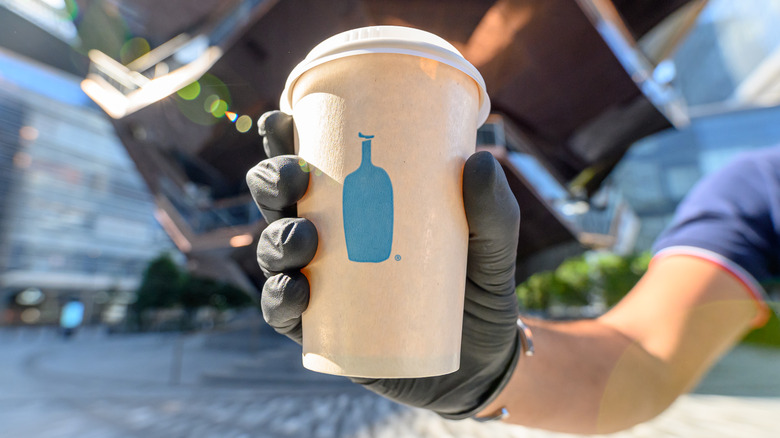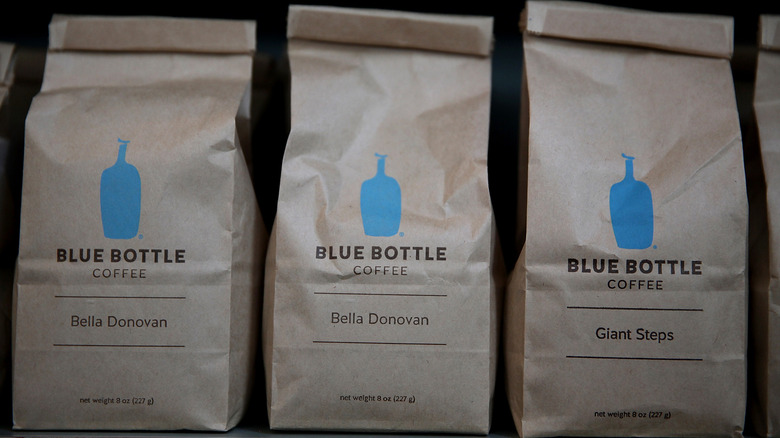Blue Bottle Coffee Was Named After A Famous European Coffee Shop
With choice coffee shops lining the streets of the United State's bi-coastal cities and trickling across various locations in between, coffee drinkers are happy to find more options for their daily cups outside of the presumed Starbucks and Dunkin' Donuts. While it may surpass the trendy title of "indie," self-proclaimed coffee lovers can take special solace in this — especially knowing that Blue Bottle, a coffee shop founded in San Francisco's Bay Area, has expanded to more than 100 locations around the world since its humble beginnings in 2002.
Blue Bottle has become well-known among coffee connoisseurs and coffee shop enthusiasts. Passers-by are often drawn in by the shops' modern design and the brand's minimal blue bottle logo and walk in to find a counter of baristas carefully brewing, steeping, and pouring cups of coffee one by one. As a brand, Blue Bottle's vision is clear: Coffee is an over-arching experience that is considerately carried on from the farms it's sourced from to how it's roasted and brewed at the café where it's served to you.
When James Freeman founded Blue Bottle Coffee in 2002, coffee was still just that: coffee. His passion, dream, and innovation built Blue Bottle into a cult-followed leader of the third-wave coffee movement. Seeing as its name was inspired by Europe's first coffee shop, it seems this was always a part of Freeman's vision.
Blue Bottle Coffee has ties to the Battle of Vienna
After failing to take Vienna in the 17th century, Turkish people fled the Austrian city, leaving bags of their coffee behind. First mistaken for camel food by Venetian locals, a man named Georg Franz Kolschitzky recognized the bags as coffee beans. With them, Franz had the idea to bring Turkish coffee to Vienna. Being an emissary of the Viennese government, Franz took the beans as a reward for his contributions to the war and used them to open one of Central Europe's first coffee shops: Hof zur Blauen Flasche, a name that translates to "The Blue Bottle."
A century or two later, a coffee renaissance was emerging. Coined as "the third wave of coffee" in 1999, a niche was evolving within the coffee industry — one that was characterized by new brewing methods, exotic flavors, and origin transparency. At the time, James Freeman was a freelance musician who had just begun roasting beans out of a 186-square-foot potting shed in Oakland's Temescal district. With his vision of providing fresh, local beans to fellow coffee gastronomes, Freeman began setting up shop at farmers' markets to sell them with the iconic blue bottle logo on the back of the bags.
Many years later, that same image can be found outside Blue Bottle's 103 coffee shop locations, to-go cups, and coffee bags, commemorating a centuries-long movement of better coffee from the first stage to the last.

